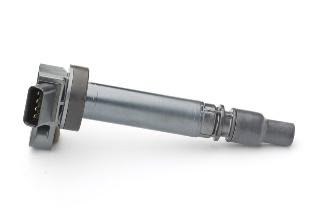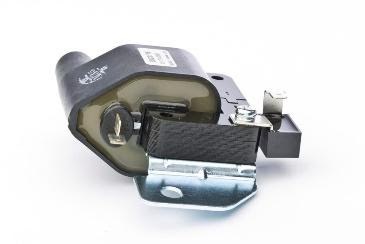Every time you turn the key, a spark needs to be delivered to trigger the ignition of the engine. To deliver this, the ignition coil needs to convert the lower power output of the car battery into the high voltages needed to enable the spark plug to fire. To help an engine perform reliably and efficiently, the ignition coil needs to create a strong power output within milliseconds. It does this by combining the effects of electricity and magnetism.
As an electrical current of around 12 volts passes from the car battery through the ignition coil (which is made up of an iron core, primary and secondary coils) a magnetic field is created around the primary coil. When the spark plug requires a spark to be made, the ignition system stops the flow of electricity into the primary coil. The magnetic field around the primary coil then collapses, increasing the voltage produced to around 200 volts. The secondary coil has around 100 times more coils than the primary one, so when the magnetic field collapses here, a voltage that’s 100 times greater is produced - around 20,000 volts.
This process - known as mutual inductance - is what causes the transformer action within the ignition coil. This produces the high voltages needed to create a spark within the spark plug, igniting the air/fuel mixture.







